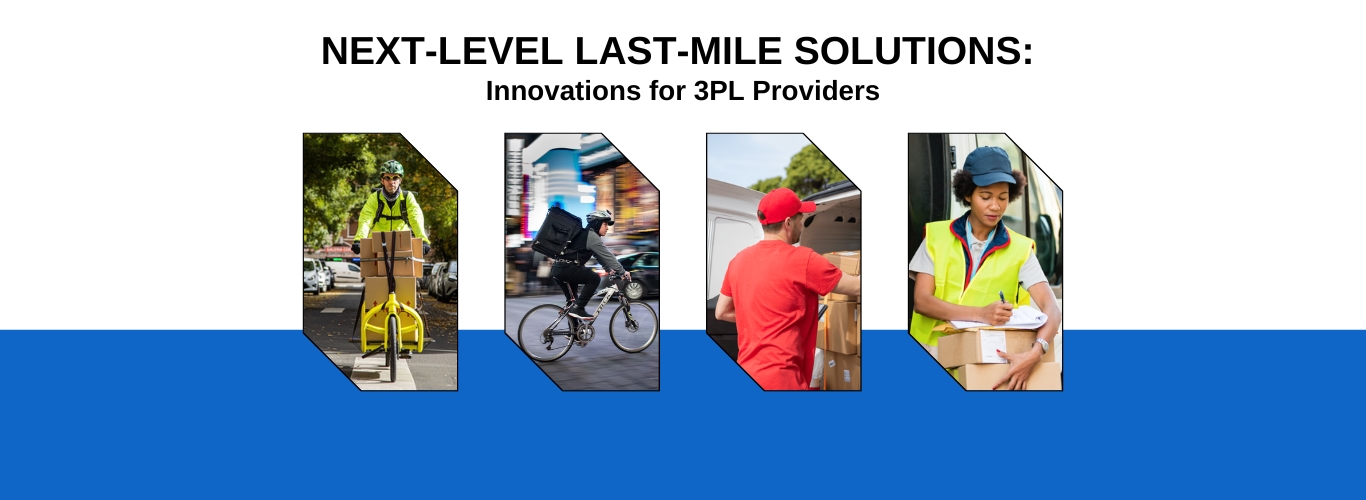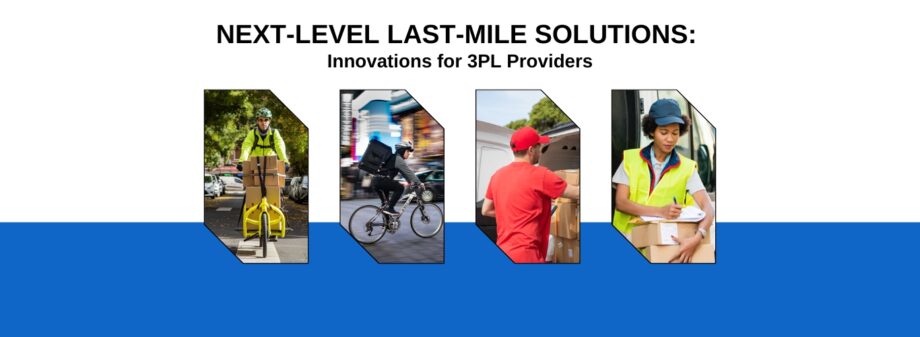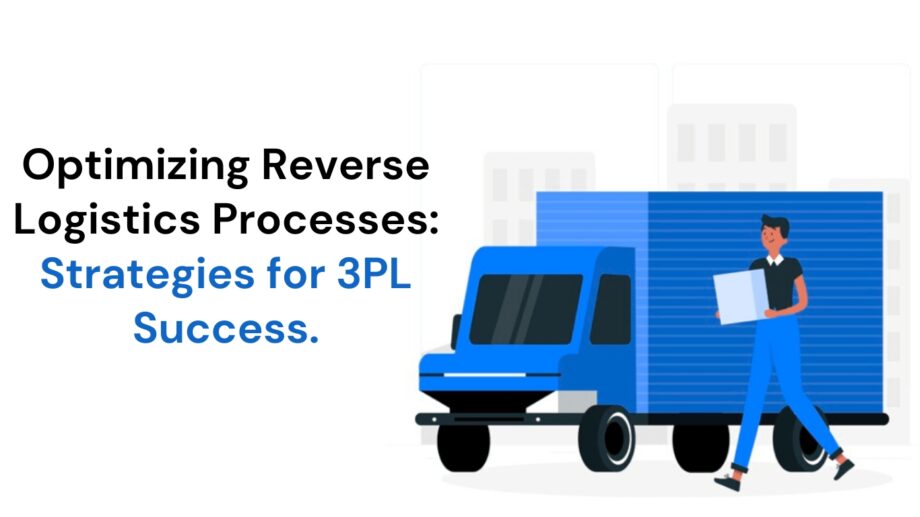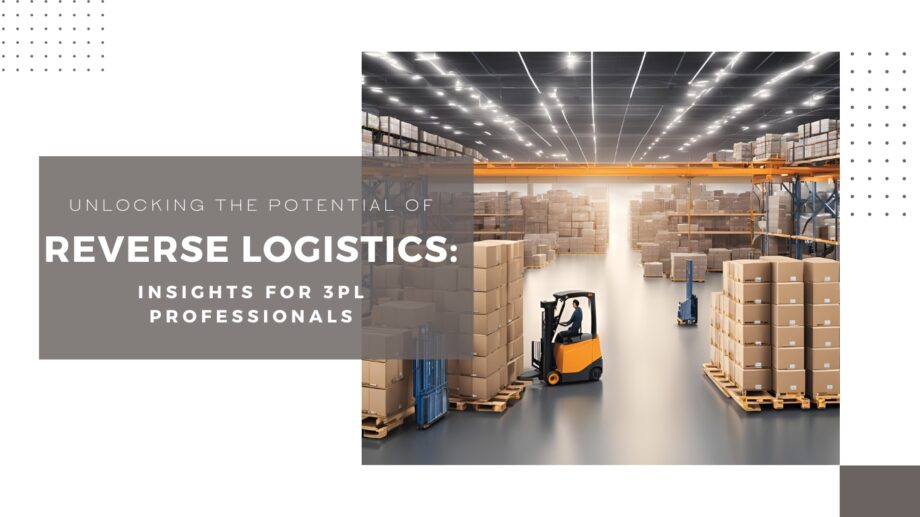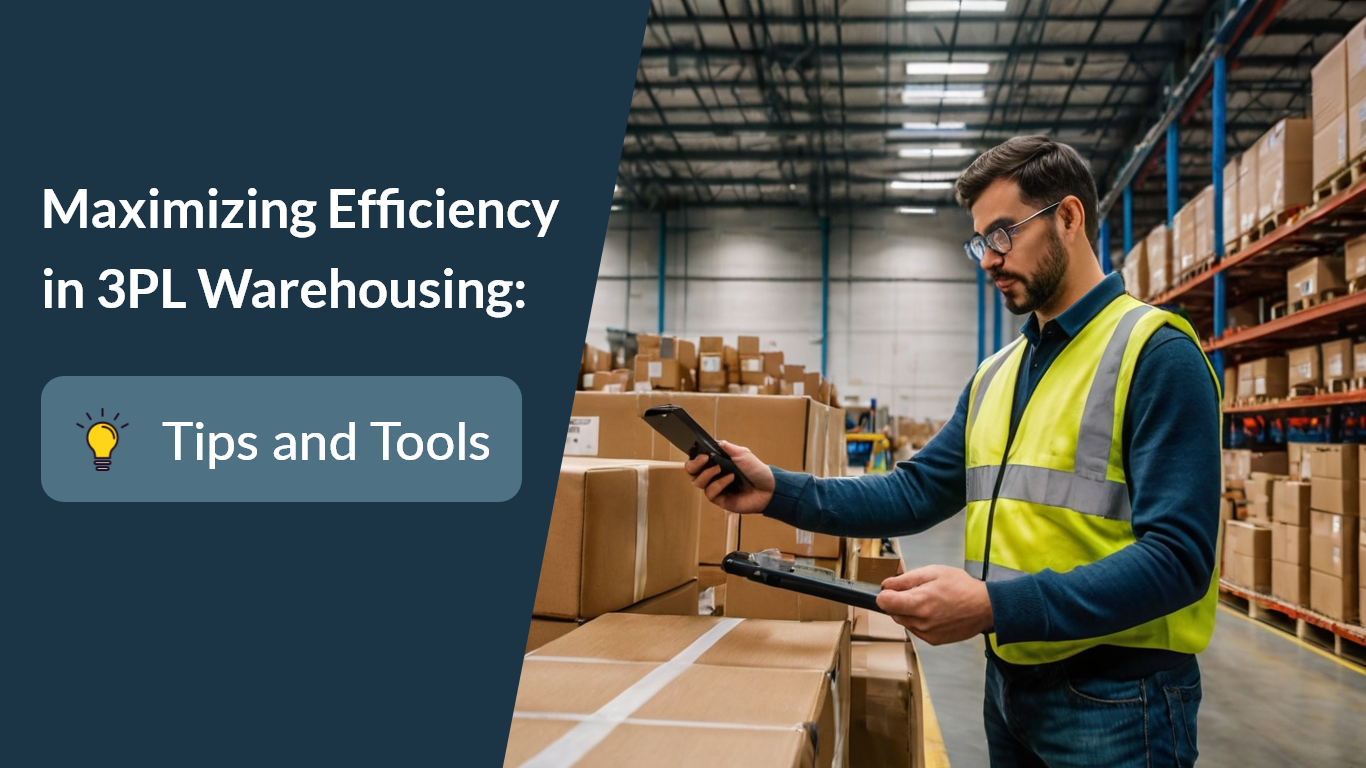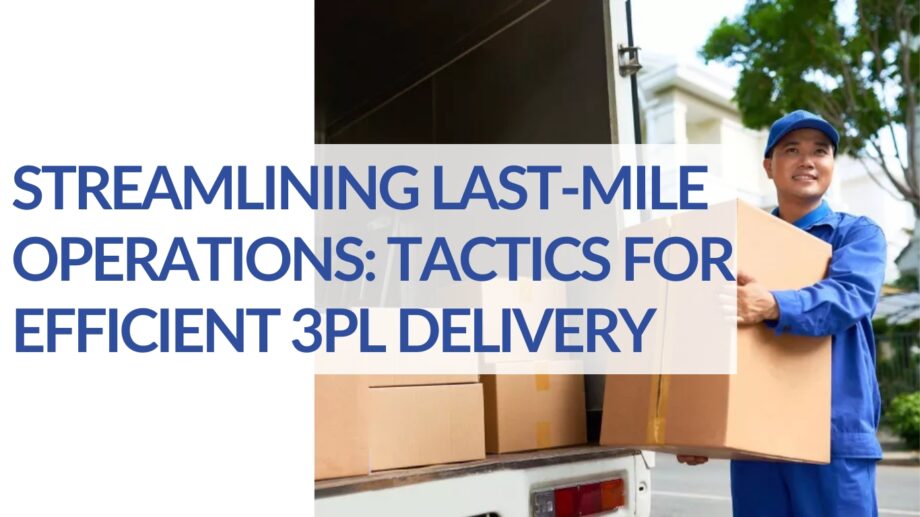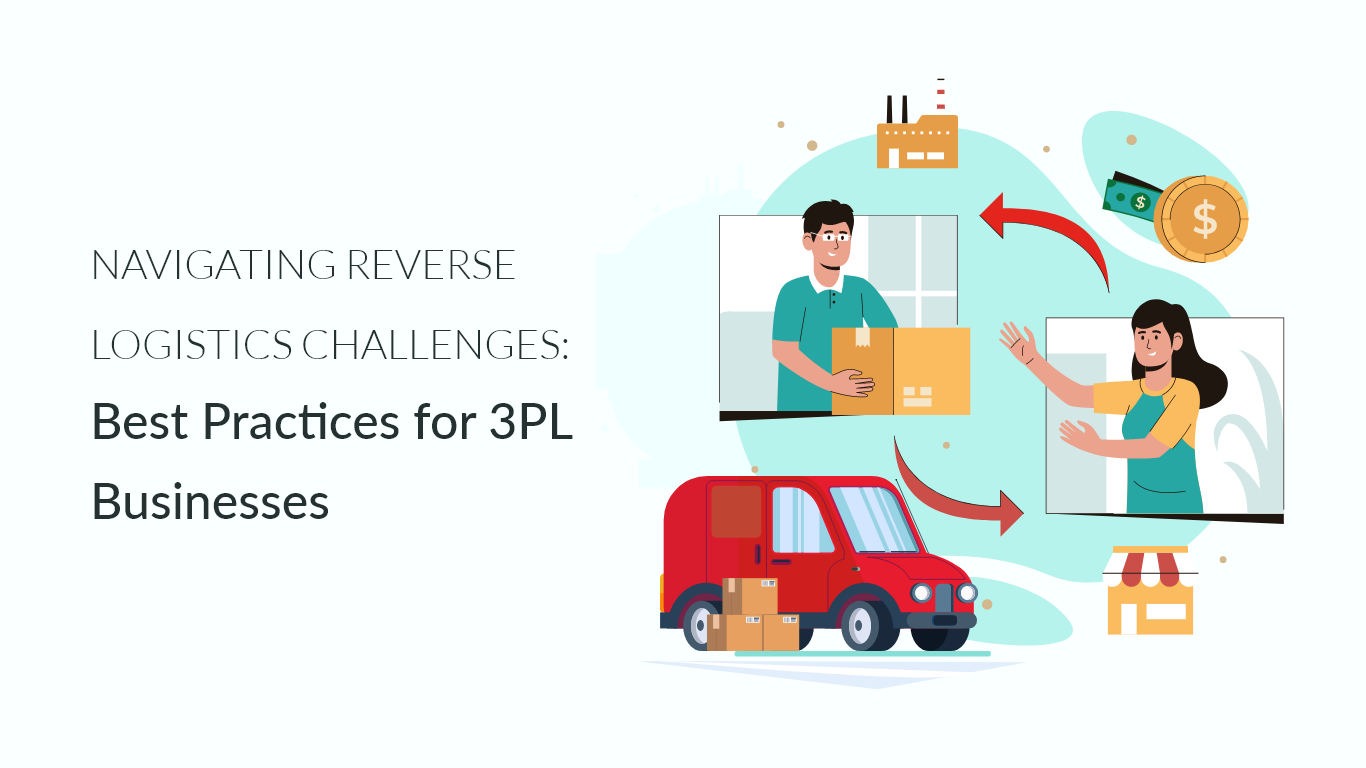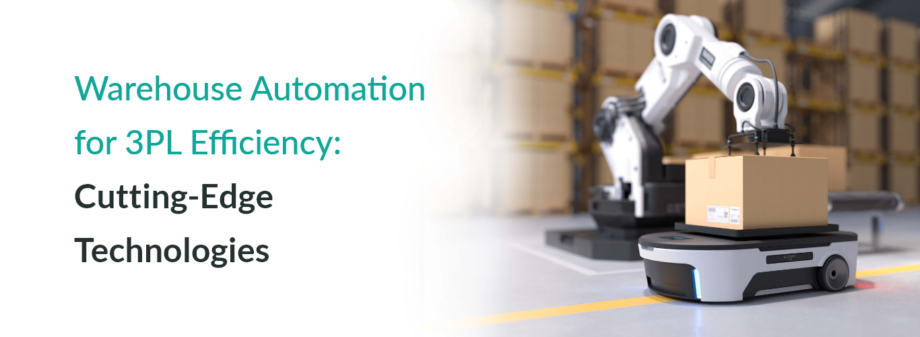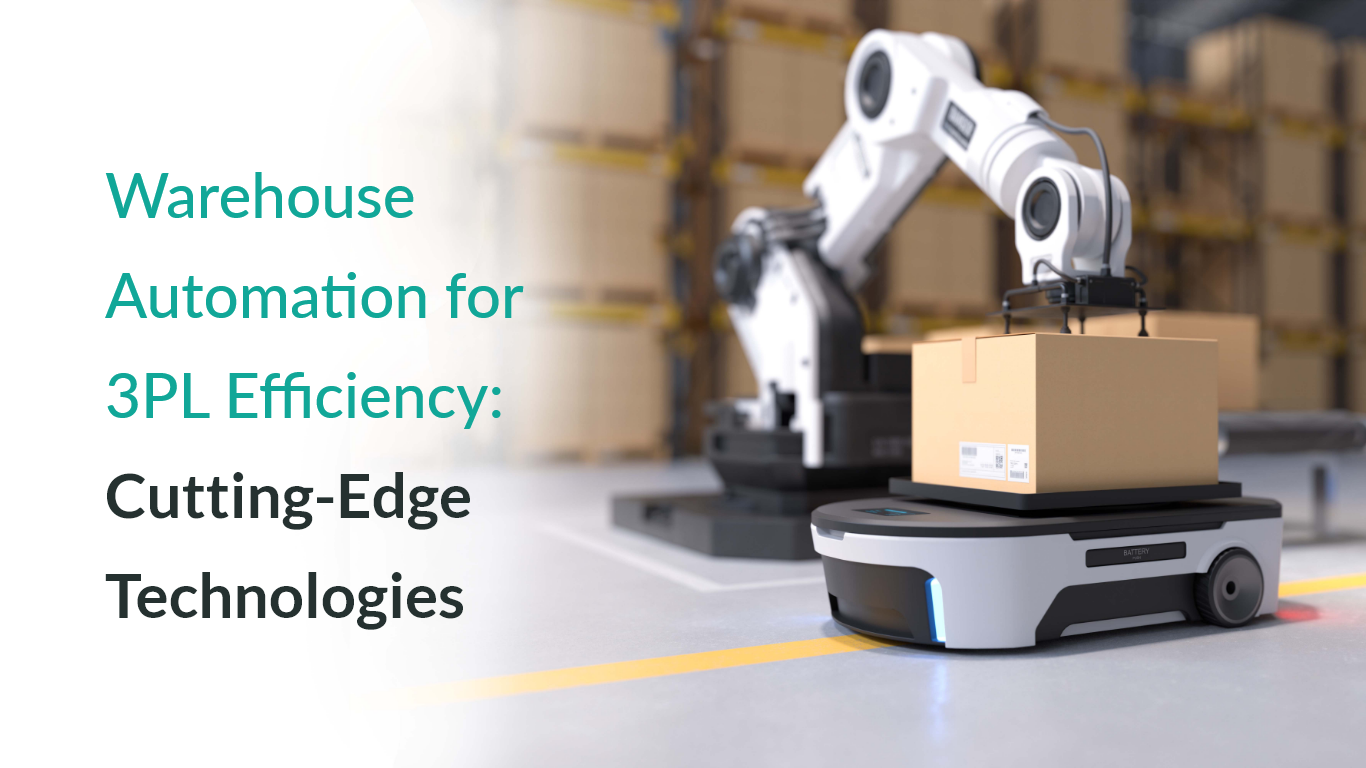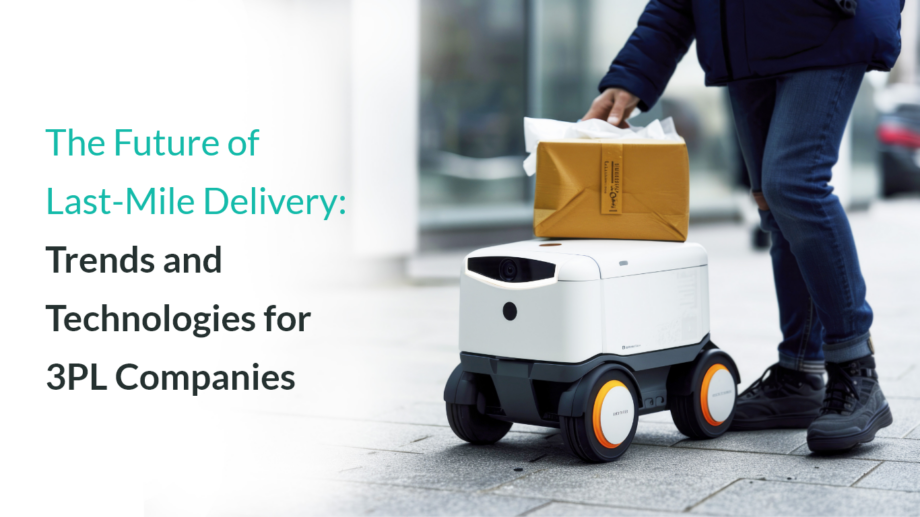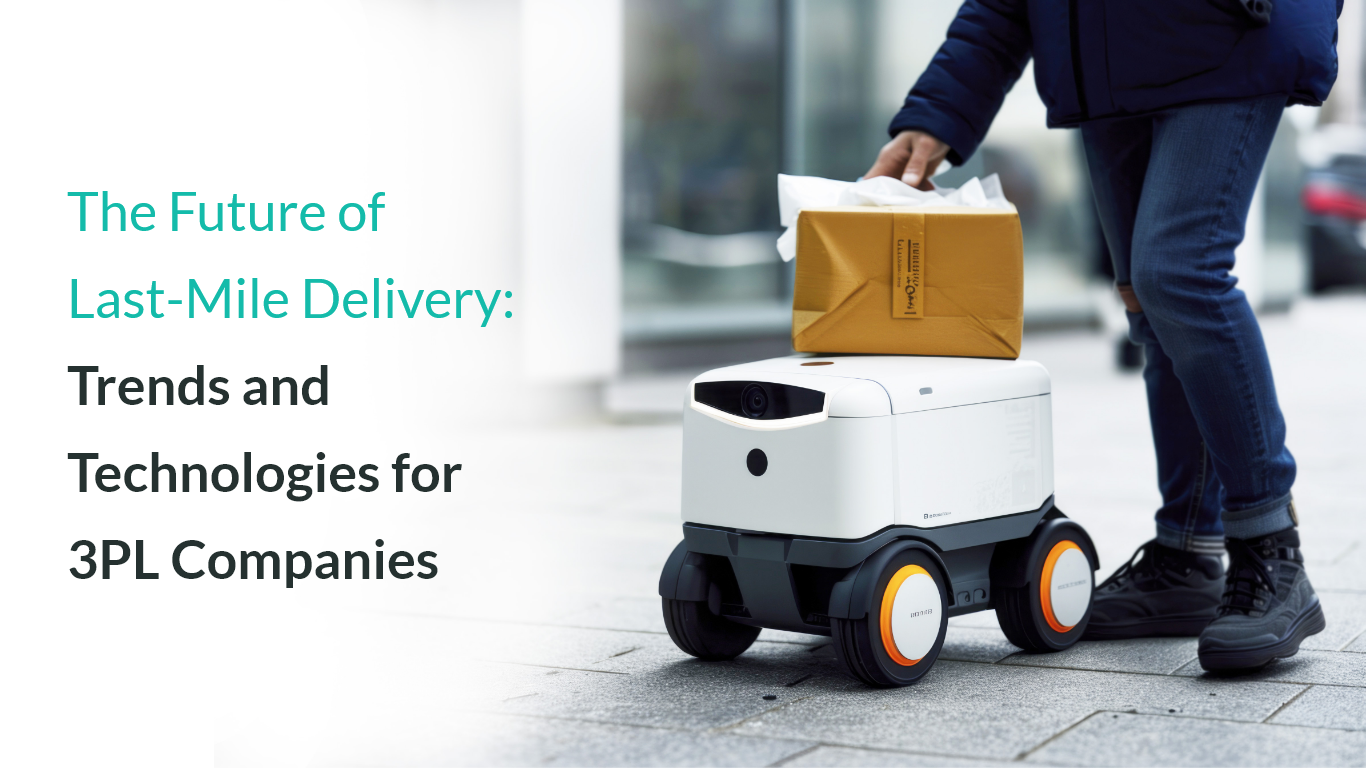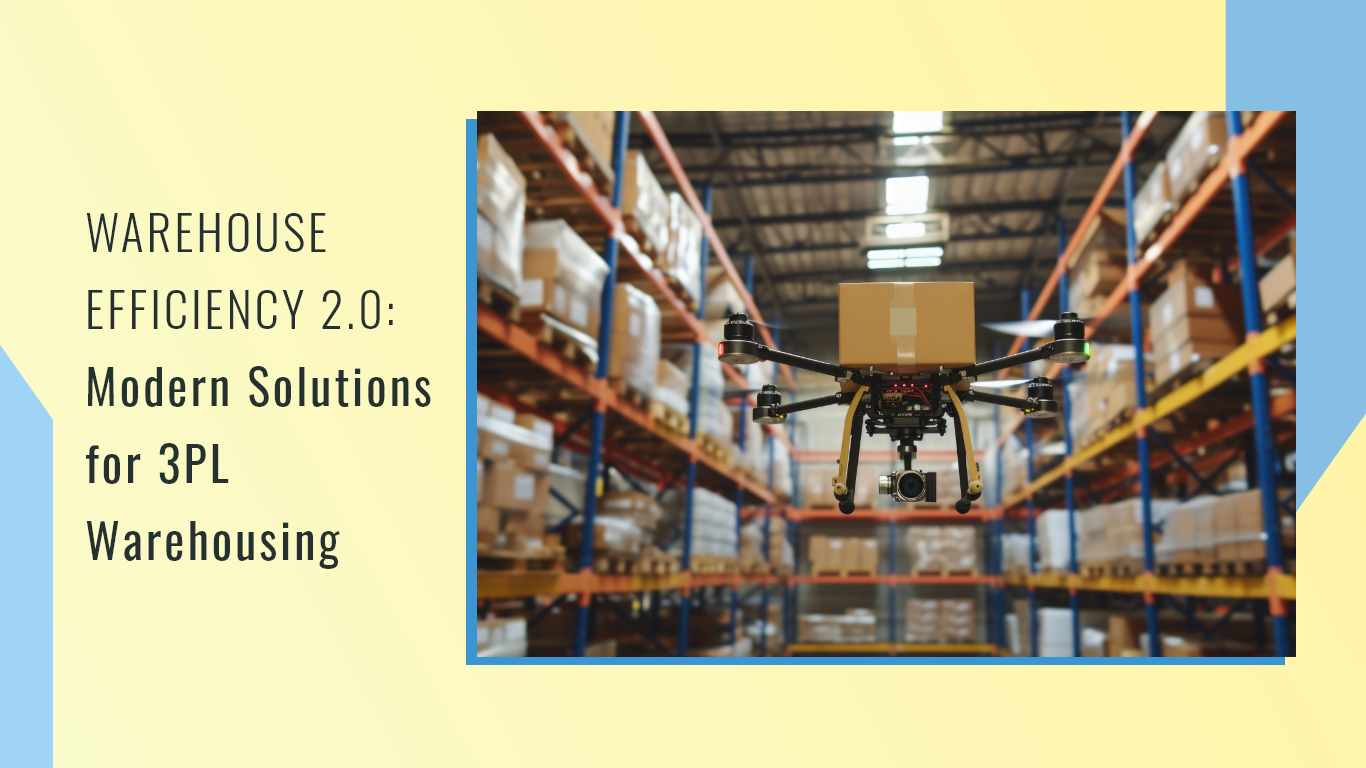In the fast-changing e-commerce landscape, last-mile delivery is leading the way in innovation. As customer expectations increase and the need for quick, reliable delivery grows, businesses are turning to advanced solutions to maintain their edge. From self-driving vehicles and drones to smart lockers and real-time tracking, third-party logistics providers (3PLs) can use the latest strategies and technologies to revolutionize last-mile delivery, boost customer satisfaction, and improve efficiency. Join us to explore the emerging trends that are transforming the delivery of goods to your customers.
Challenges and Opportunities in Last-Mile Delivery
The last-mile of the delivery process has long been considered the most complex and costly component of the supply chain. As consumer expectations for faster, more convenient deliveries continue to rise, logistics providers face mounting pressure to optimize their last-mile strategies and overcome the unique challenges that this final stretch of the journey presents. From navigating urban congestion and managing failed deliveries to delivering on sustainability goals, the last-mile of logistics has become a critical battleground for companies seeking to differentiate themselves and delight their customers. However, with the right mix of innovative technologies, operational agility, and customer-centric thinking, logistics providers can transform last-mile delivery into a strategic advantage that drives efficiency, reduces costs, and enhances the overall customer experience.
Challenges in Last-Mile Delivery
1. Urban Congestion and Traffic Delays
– The rise of e-commerce has resulted in a dramatic increase in delivery volumes, particularly in densely populated urban areas. Navigating the complex web of traffic, narrow streets, and limited parking in city centers can lead to significant delivery delays, increased fuel consumption, and higher operational costs for logistics providers. This urban congestion poses a major challenge for last-mile delivery, requiring innovative solutions and strategic planning to overcome.
2. Failed Deliveries and Returns
– Failed deliveries, whether due to customers not being home or invalid addresses, can be a significant drain on resources and profitability. Additionally, the growth of e-commerce has led to higher rates of product returns, further complicating the last-mile process and requiring robust reverse logistics capabilities. Managing these failed deliveries and returns efficiently is crucial for maintaining customer satisfaction and operational efficiency.
3. Sustainability and Environmental Impact
– Consumers are becoming increasingly conscious of the environmental impact of deliveries, with a growing demand for eco-friendly, sustainable last-mile solutions. Logistics providers must find ways to reduce their carbon footprint, optimize fleet utilization, and implement greener delivery methods to meet these evolving customer expectations. Sustainability in last-mile delivery not only addresses environmental concerns but also enhances brand reputation and customer loyalty.
4. Fulfillment Flexibility and Personalization
– Customers expect a seamless, personalized delivery experience, with options for flexible scheduling, real-time tracking, and convenient pickup locations. Catering to these diverse preferences can be a significant challenge for logistics providers, requiring advanced technologies and a customer-centric approach. The ability to provide tailored delivery options is essential for meeting customer demands and standing out in a competitive market.
5. Cost Optimization and Profitability
– The last-mile of delivery is often the most expensive component of the supply chain, with labor, fuel, and infrastructure costs eating into profit margins. Logistics providers must find ways to optimize their operations and identify innovative strategies to reduce these costs while maintaining high levels of service. Balancing cost efficiency with quality service is critical for sustaining profitability in last-mile delivery.
Opportunities in Last-Mile Delivery
1. Leveraging Technology and Automation
– The integration of advanced technologies, such as route optimization algorithms, automated dispatch systems, and real-time tracking and monitoring, can significantly improve the efficiency and visibility of last-mile operations. By harnessing the power of data and analytics, logistics providers can make more informed decisions, reduce delivery times, and enhance the overall customer experience. Automation in last-mile delivery also helps reduce human error and increase operational reliability.
2. Exploring Alternative Delivery Methods
– Beyond traditional last-mile delivery methods, logistics providers can explore innovative solutions, such as autonomous vehicles, drone delivery, and micro-fulfillment centers, to overcome the challenges of urban congestion and environmental concerns. These emerging technologies not only have the potential to streamline operations but also appeal to environmentally conscious consumers. Alternative delivery methods can provide faster, more efficient, and sustainable delivery options.
3. Enhancing Collaboration and Partnerships
– Fostering strong partnerships with e-commerce platforms, retailers, and even competitors, can enable logistics providers to access a wider customer base, share resources, and develop more comprehensive last-mile solutions. By collaborating on data sharing, joint delivery networks, and shared infrastructure, logistics providers can achieve greater economies of scale and improve overall service levels. Collaborative efforts in last-mile delivery can lead to innovative solutions and better customer service.
4. Prioritizing Sustainability and Eco-Friendly Practices
– As consumers and regulators place greater emphasis on environmental sustainability, logistics providers have a unique opportunity to position themselves as industry leaders in green logistics. By investing in alternative fuel vehicles, optimizing fleet utilization, and implementing eco-friendly packaging solutions, logistics providers can differentiate themselves, meet evolving customer demands, and contribute to a more sustainable future. Sustainable practices in last-mile delivery can enhance brand image and customer loyalty.
5. Delivering Personalized and Flexible Experiences
– By leveraging data-driven insights and advanced technologies, logistics providers can tailor their last-mile services to meet the specific needs and preferences of individual customers. This may include offering flexible delivery windows, convenient pickup locations, and seamless communication throughout the delivery process, ultimately enhancing customer satisfaction and loyalty. Personalized delivery experiences can drive customer retention and competitive advantage.
Key Trends and Technologies Shaping the Future of Last-Mile Delivery
1. Automation and Robotics Integration
– The integration of automation and robotics technologies is quickly becoming a game-changer in the last-mile delivery arena. From autonomous delivery vehicles and drones to robotic sorting systems and automated loading/unloading solutions, these advanced technologies have the potential to revolutionize the way 3PL companies approach the final leg of the supply chain.
– By automating repetitive, labor-intensive tasks, 3PL providers can increase operational efficiency, reduce delivery times, and minimize the risk of human error. Moreover, the integration of sensors and real-time data analytics can provide 3PLs with greater visibility into their delivery networks, enabling them to make more informed, data-driven decisions. As these technologies continue to evolve and become more accessible, 3PL companies that embrace automation and robotics will be well-positioned to differentiate themselves, optimize their cost structures, and deliver a superior customer experience.
2. Electrification and Sustainable Mobility
– Sustainability has become a key priority for consumers and regulators alike, and the last-mile delivery sector is no exception. 3PL providers are under increasing pressure to reduce their carbon footprint and adopt eco-friendly transportation solutions, paving the way for the widespread adoption of electric vehicles (EVs) and alternative fuel technologies.
– By transitioning their delivery fleets to electric or hybrid-electric models, 3PL companies can significantly reduce their greenhouse gas emissions, lower fuel costs, and demonstrate their commitment to environmental stewardship. Furthermore, the integration of renewable energy sources, such as solar-powered charging stations, can further enhance the sustainability of 3PL operations. As the cost of electric vehicles continues to decline and the supporting infrastructure expands, 3PL companies that invest in sustainable mobility solutions will gain a competitive advantage, appeal to environmentally conscious customers, and contribute to a greener future.
3. Micro-Fulfillment and Distributed Warehousing
– The rapid growth of e-commerce has led to a surge in consumer demand for faster, more convenient deliveries, placing significant strain on traditional last-mile delivery models. In response, 3PL companies are exploring innovative strategies such as micro-fulfillment and distributed warehousing to bring their products closer to the end-customer.
– Micro-fulfillment centers, strategically located in urban areas, can enable 3PL providers to offer same-day or next-day delivery options, while distributed warehousing networks can improve overall supply chain agility and responsiveness. By leveraging these decentralized models, 3PL companies can reduce the distance and time required for the last-mile, ultimately enhancing the customer experience and reducing delivery costs. Furthermore, the integration of automation and robotics technologies within these micro-fulfillment and distributed warehousing facilities can further optimize operations, increase throughput, and drive greater efficiency.
4. Predictive Analytics and Demand Forecasting
– In the dynamic world of last-mile delivery, the ability to anticipate and respond to changing consumer demands is crucial. 3PL companies that harness the power of predictive analytics and advanced demand forecasting can gain a significant competitive advantage, enabling them to proactively adjust their operations, optimize resource allocation, and deliver a seamless customer experience.
– By collecting and analyzing data from a variety of sources, including historical delivery patterns, real-time traffic conditions, and customer behavior, 3PL providers can develop sophisticated predictive models that forecast demand, identify potential bottlenecks, and enable more informed decision-making. This data-driven approach can help 3PLs optimize their delivery routes, ensure appropriate inventory levels, and allocate resources more effectively. As the volume and complexity of data continue to grow, 3PL companies that invest in advanced analytics and machine learning capabilities will be better equipped to navigate the ever-evolving last-mile landscape and stay ahead of the competition.
5. Collaborative Delivery Networks and Partnerships
– In the highly competitive last-mile delivery market, the ability to leverage collaborative networks and strategic partnerships can be a game-changer for 3PL providers. By collaborating with e-commerce platforms, retailers, and even other logistics companies, 3PL firms can gain access to a wider customer base, share resources, and develop more comprehensive last-mile solutions.
– Through the creation of shared delivery networks, 3PL companies can optimize routes, reduce empty miles, and achieve greater economies of scale. Additionally, partnerships with technology providers and innovators can enable 3PLs to integrate cutting-edge solutions, such as autonomous vehicles and drone delivery, into their service offerings. By fostering a culture of collaboration and innovation, 3PL companies can differentiate themselves, enhance their value proposition, and position themselves as trusted, strategic partners to their clients.
6. Personalized Delivery Experiences
– As consumer expectations continue to evolve, the ability to provide personalized and flexible delivery experiences has become a critical differentiator in the last-mile delivery market. 3PL companies that can cater to the unique preferences and needs of their customers will be well-positioned to build brand loyalty, drive repeat business, and enhance their overall competitive position.
– This may involve offering a wide range of delivery options, from scheduled time slots and curbside pickup to flexible rerouting and real-time tracking. By leveraging data-driven insights and advanced technologies, 3PL providers can tailor their services to individual customers, ensuring a seamless and delightful delivery experience. Furthermore, the integration of omnichannel capabilities, such as the ability to manage returns and exchanges through multiple channels, can further enhance the customer experience and solidify the 3PL’s position as a trusted partner.
7. Workforce Empowerment and Skills Development
– While technology and innovation play a crucial role in shaping the future of last-mile delivery, 3PL companies must also prioritize the development and empowerment of their human capital. As the logistics industry evolves, the skills and competencies required of the workforce will continue to shift, and 3PL providers must invest in training, upskilling, and talent management to ensure their teams are equipped to navigate this dynamic landscape.
– From data analysis and technology integration to customer service and sustainability practices, 3PL companies must equip their employees with the knowledge and skills necessary to drive continuous improvement, foster innovation, and deliver exceptional service. By cultivating a culture of learning, collaboration, and career development, 3PL providers can unlock the full potential of their workforce and position themselves as employers of choice in the industry.
Conclusion
The future of last-mile delivery is poised to be defined by a convergence of emerging trends and transformative technologies. As 3PL companies navigate this rapidly evolving landscape, the ability to embrace innovation, foster strategic partnerships, and prioritize customer-centricity will be key to unlocking long-term success and growth.
By investing in automation, sustainable mobility, advanced analytics, and collaborative delivery networks, 3PL providers can optimize their operations, enhance the customer experience, and solidify their position as indispensable partners to their clients. Furthermore, by empowering their workforce and fostering a culture of continuous learning and improvement, 3PL companies can future-proof their organizations and stay ahead of the curve in the dynamic world of last-mile delivery.
The 3PL companies that can successfully navigate these trends and leverage the power of cutting-edge technologies will be well-positioned to capture a larger share of the rapidly growing e-commerce market, differentiate themselves from the competition, and solidify their status as industry leaders. As the last-mile delivery landscape continues to transform, those 3PL providers that embrace innovation and adapt to the evolving needs of customers will be the ones that thrive in the years to come.
